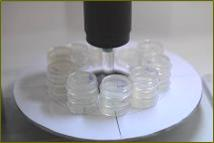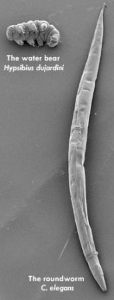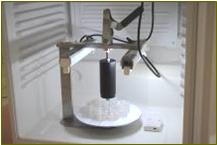The STAR project finished on 31st July 2015 - page no longer being updated
| STAR’s first collaborative experiment was conducted in September 2011 | |||
|---|---|---|---|
 |  |  | |
The study is an example of STAR’s goal of sharing resources among its research teams.The work was led by IRSN’s biochemist Cathy Lecomte-Pradines at Cadarache, France, in collaboration with the Norwegian University of Life Sciences (UMB, Norway; Claire Coutris and Turid Hertel-Aas).The research examined the effects of chronic, external gamma irradiation on several physiological processes in nematodes (C. elegans), an important soil invertebrate. The goal of the experiment was to test the feasibility of examining effects using a Dynamic Energy Budget (DEBtox) approach. The DEBtox model examines how contaminants alter life history traits in exposed organisms (e.g. time to maturation, number of offspring produced per brood, number of broods in a life time). The changes in life history traits are thought to occur due to the contaminant’s effects on the allocation of energy obtained from an organism’s food. The ultimate target is to provide new insights on possible modes of action for external gamma irradiation according to bioenergetic processes. C. elegans is a suitable biological model for studies on the effects from chronic irradiation due to its short life cycle (only 3 days) and short life span (about 21 days). Its small size also allows the use of a large number of organisms in a small experimental device. In this experiment, C. elegans were exposed from embryos to reproductive adults, and to five dose rates (0, 1, 10, 100, 750, 1000 mGy/day) derived from Cs-137. Effects of gamma irradiation were measured daily on key physiological endpoints: growth, brood size and life span of the first generation (F0), and growth and brood size for the second generation (F1). Statistical analyses of data are ongoing. First results appear to show no-effect on somatic growth, and a slight decrease in production of offspring at the highest dose-rate, suggesting a direct effect of ionizing radiation on reproduction. The report from the study is now available: Plans for laboratory radiation effects studies
| |||
